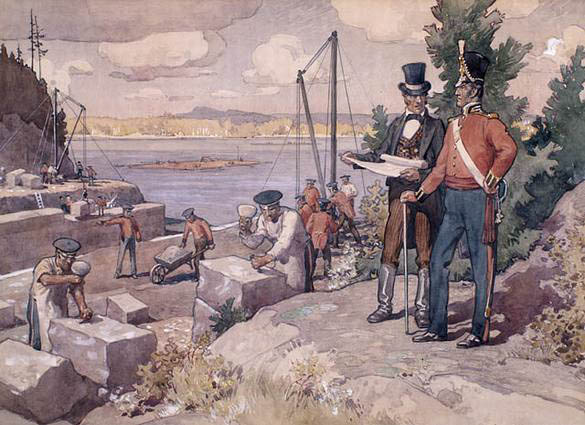Canada’s Rideau waterway linking Ottawa (the nation’s capital) with Kingston Ontario was built for military purposes but its role evolved dramatically in the years to follow. So did Canada, which did not exist as a nation until 1867. That was more than five decades after the War of 1812 between the United States and British loyalists opposed joining Americans who had broken away from Britain to form their own country. The war was inconclusive with both sides declaring victory in what was mainly a series of skirmishes.
But the end of the war did not guarantee peace. Loyalist ships travelling the St. Lawrence River between Kingston, a major military base, and Montreal were often attacked from the American side. The naval shipyards in Kingston were crucial in defending what would become Canada. The solution was to bypass the St. Lawrence River by linking up lakes and rivers to create a route north of the St. Lawrence River. It involved an elaborate system of locks that enabled ships to be raised or lowered to overcome the problem of differences in elevation.
The challenge of planning and supervising this project was given to Lieutenant Colonel John By of the Royal Engineers in 1826. The job was so massive it required thousands of labourers, as well as skilled tradesmen. The Royal Engineers were responsible for the design work. There are different opinions on the number of deaths during the construction period but it is believed that most were victims of malaria, rather than accidental deaths.

In the years that followed, the Rideau waterway changed from being an obstacle to American military forces to a welcome mat for U.S. tourists. It still is today. With the advent of automobiles it became an easy commute to the Rideau from northern New York state. Fishing was a big attraction and fishing lodges sprung up to meet the demand. Today, many Americans own cottages on the Rideau.
The area is popular with scuba divers, too. There is some diving in the Rideau lakes. Big Rideau Lake is the largest and deepest, with a depth of just over 300 feet in some locations near its north shore. Since most boats on the Rideau waterway are small pleasure vessels divers are unlikely to find large wrecks.
There are interesting artifacts at the bottom of Navy Bay in Kingston. That is the domain of the St. Lawrence and Lake Ontario. The latter is one of the Great Lakes, the largest freshwater source in the world. Cornwall, Brockville and Kingston are among the diving centres on the river. Kingston is at the confluence of the St. Lawrence River and Lake Ontario.
The shipwrecks in the Great Lakes range from schooners from the 18th century, to cargo ships and lakers. For shore divers, Navy Bay in Kingston is an interesting location. Clay pipes, cannon and musket balls can be found on the bottom of the bay. There is also a French bateau that predates the time of the British.






